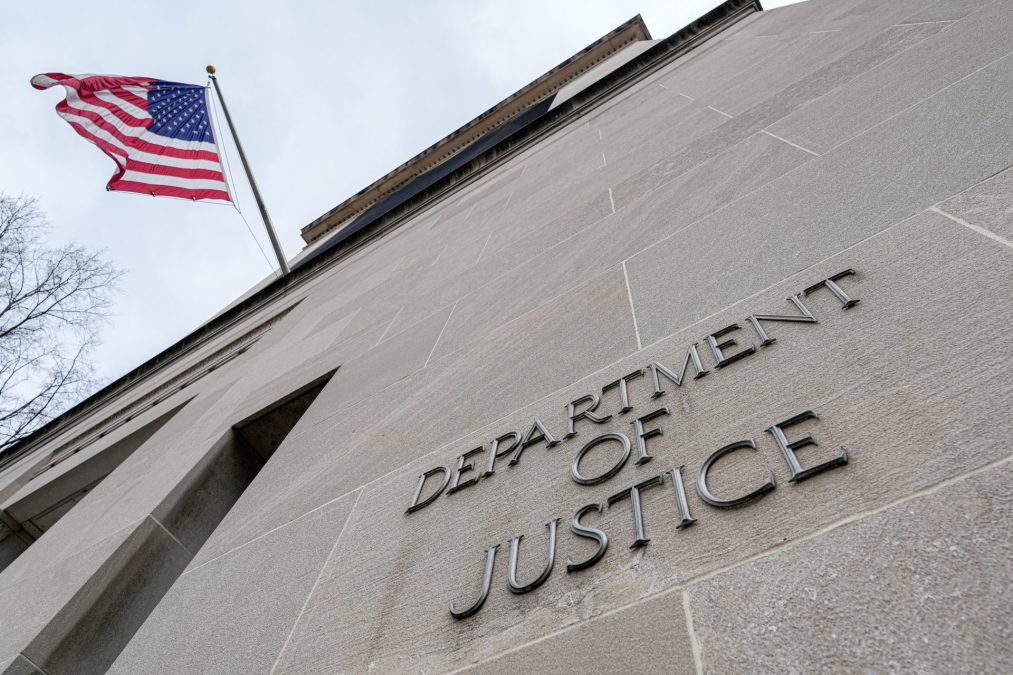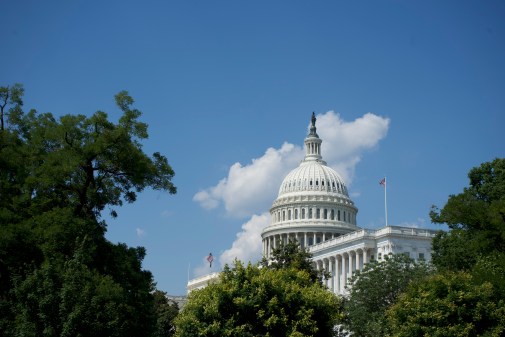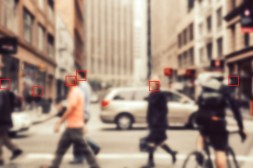Peaceful protests, lawful assembly can’t be sole reason for DOJ facial recognition use under interim policy

Activities protected under the First Amendment, such as peaceful protests and lawful assembly, “may not be the sole basis for the use of” facial recognition technology under the Justice Department’s interim policy governing its deployment of the technology, the agency told a civil rights panel.
In written testimony submitted to the U.S. Commission on Civil Rights last week, the DOJ shared details of its approach to using facial recognition technology, or FRT, including its interim policy, which it issued in December but hasn’t shared publicly. The testimony came a couple of weeks after the civil rights panel held a briefing on federal use of facial recognition technology that the DOJ didn’t testify at in-person or submit testimony for in advance.
“Notably, the Interim FRT Policy mandates that activity protected by the First Amendment may not be the sole basis for the use of FRT,” the DOJ said in its testimony. “This would include peaceful protests and lawful assemblies, or the lawful exercise of other rights secured by the Constitution and laws of the United States.”
Additionally, the interim policy states that “FRT results alone may not be relied upon as the sole proof of identity,” the DOJ said. It also requires that facial recognition technology complies with the department’s AI policies and that employees never use the technology to “engage in or facilitate unlawful discriminatory conduct,” in addition to requiring risk assessments for the accuracy of facial recognition systems used by the department.
The interim policy could also lead to public disclosures of certain information about use of the technology at the department. Components using facial recognition systems are required to “develop a process to account for and track system use” under the interim policy and report on that use annually to the DOJ’s Emerging Technology Board, which was established to oversee the department’s use of AI and emerging technology, and its Data Governance Board.
“Without compromising law-enforcement sensitive or national security information, each of these annual reports will be consolidated into a publicly released summary on the Department’s FRT use,” the testimony said.
The commission’s March 8 briefing explored federal use of facial recognition technology at DOJ, the Department of Homeland Security, and the Department of Housing and Urban Development as it prepares a report. Adoption of the technology in the federal government has prompted concerns about privacy and civil liberties, including from lawmakers and academics.
Neither the DOJ nor HUD participated in the hearing, and DOJ’s lack of participation, in particular, prompted two commissioners to indicate they were willing to use subpoena power to produce information. At the time of the briefing, a DOJ spokesperson told FedScoop it was communicating with the commission about a response.
A Government Accountability Office review of facial recognition systems in the government found that agencies, including the DOJ, didn’t have policies specific to the use of the technology and initially didn’t require training. That report found that the DOJ had “taken steps to issue a department-wide policy” but “faced delays.” The GAO ultimately recommended, among other things, that the attorney general develop a plan for issuing a policy that addresses civil rights and civil liberties.
In testimony to the commission at its briefing, GAO’s Gretta Goodwin said the department informed the government watchdog that it had issued an interim policy but the GAO hadn’t yet seen that policy. Goodwin, who directs the watchdog’s Homeland Security and Justice team, said the GAO plans to review the interim policy as part of its follow-up process on the recommendation.
The description of the interim policy in the department’s testimony appears to address some of GAO’s findings. For example, the DOJ said that the policy mandates that employees using those systems receive training that includes information about privacy, civil rights and civil liberties laws relevant to the use of facial recognition technology.
While the department acknowledged potential equity and fairness implications of the technology, it also underscored the potential benefits. According to the testimony, facial recognition technology was used by the FBI over the last year to combat crime, find missing children, and address threats on the border. The U.S. Marshals Service also uses the technology for investigations and protective security missions, DOJ said.
“When employed correctly, FRT affirmatively strengthens our public safety system,” the DOJ said.
The interim policy was created by a working group within the department that met throughout 2022 and 2023. That group included legal experts and subject matter experts throughout the DOJ. The interim policy will be updated after the department completes an interagency report on best practices required under President Joe Biden’s executive order on policing, the DOJ said.






